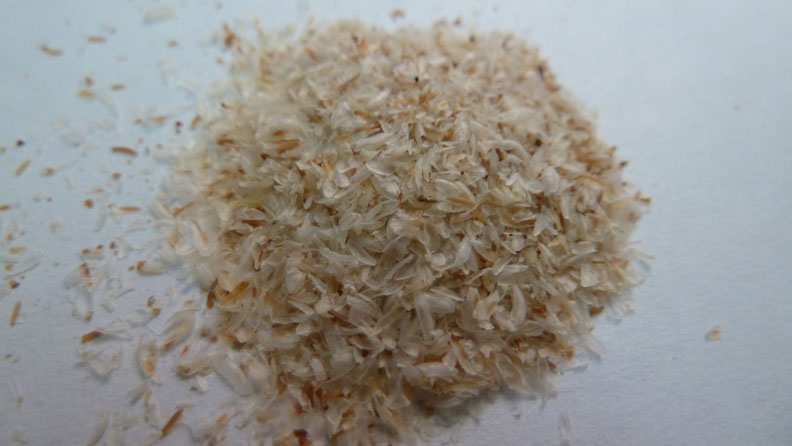
“Western” herbs are those plants that commonly grow in North America and Europe. They have been in use for hundreds of years to help with a number of common complaints. In the paragraphs that follow I will introduce to you a few of the more important Western herbs, and what they are used for in pets.
Psyllium seed and husk (Plantago ovata) comes from a plant related to the common plantain that is found in moist areas. The seed is rich in soluble and insoluble fiber, and is commonly used to help moisten the stool if there is dry hard constipation. It is the primary active ingredient in Metamucil™ for that reason. The soluble fiber found in the psyllium seeds, in addition to moistening the stool to allow it to pass through the bowel better, also serves as food for the beneficial bacteria, also known as probiotics. The insoluble fiber acts like a brush, helping to keep the bowel clean, and healthy. I’ve used psyllium husk and seed for patients of mine who had chronically soft stools, as it adds bulk to the stool and makes it less messy. I would give about ¼ teaspoon for each 10 pounds of body weight once or twice daily for an effective dosage. It can be mixed easily in with the food, as it has no taste at all.
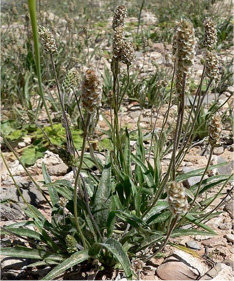
Plantago ovata
Psyllium plant
www.VBMA.org
Dandelion Plant (Taraxacum officinale) is one of the most common healthy Western herbs found growing everywhere, including in our backyards. Dandelion makes a delicious fresh herb to pick and eat in your salad, and it doesn’t just taste good, it is so good for you as well. And if its good for you, its also just as good for your dog and cat friends.
Every part of the dandelion plant has a purpose. For instance, the flowers have antioxidant properties and can be made into a wine. The leaves have a mild diuretic property, which means that they will increase your urination and cause you to thirst more as a result. The leaves will also stimulate appetite and help with digestion, kidney function and can help to reduce inflammation. The root is used to detoxify liver and help with gallbladder problems. It also has a mild laxative effect. Some studies have found that dandelion root can also help to regulate blood sugar and raise good cholesterols. Something that is good for people, but probably doesn’t matter that much for the critters.
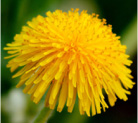
Taraxacum officinale
Dandelion flower
www.VBMA.org
Milk Thistle (Silybum marianum) is a very commonly used Western herb. It is a weed, and grows widely throughout Europe and North America. It is the seeds that contain the phytochemicals of importance to your pet and for yourself as well. It has been found that the seeds contain a flavonolignan compound that is made up of 8 isomers components and is called “Silymarin” which was discovered in 1967. It has been found that silymarin can help the liver to repair and can actually protect the liver from liver toxins. Many conditions like hepatitis or gall bladder problems have been helped by the use of silymarin, as well as other therapies, as appropriate to the patients’ individual problem.
I’ve found that those dogs and cats that present to my veterinary clinic with elevated liver values are very commonly helped by the oral use of milk thistle extract. When you go shopping for milk thistle, the best extracts are either standardized to 80% Silymarin content, or they have taken a few of the isomers in silymarin and have chemically bound them to a fraction of a molecule found in lecithin to improve their absorption, as well as their cost. This complicated molecule is called “sily-phos” or phosphatidylcholine bound silibinin.
The use of either commercially available form of milk thistle extract, when given at the recommended dosages will result in substantial help and repair of the diseased and/or damaged liver and gall-bladder. The dosage for silymarin ranges from 15 mg/kg twice daily to 50 mg/kg twice daily. The dosage for the sily-phos molecule is: 5-10 mg/kg/day.
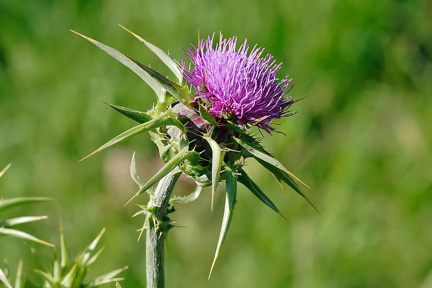
Silybum marianum
Milk Thistle flower
www.VBMA.org
Cranberry (Vaccinium macrocarpon), the bright red-colored berry has some pretty interesting medicinal uses in addition to its yummy use at Thanksgiving as a sauce and condiment. Over hundreds of years of use by people for a variety of complaints, the main application for cranberry juice has been to help urinary tract infections get better quicker.
Cranberries have a unique type of antioxidant in them that gives them their red color. This special antioxidant that is unique to cranberry is called “Proanthocyanidin-A”. It is special because it attaches to the bacterial pathogens that commonly cause urinary tract infections and prevents then from infecting the urinary bladder.
Sometimes cranberry juice or powdered dried cranberry juice will be given in the absence of antibiotics and will improve the painful symptoms of a urinary tract infection. In other cases just cranberry juice alone can even make the bacterial infection go away. Non-uncommonly cranberry is used concurrently with antibiotics at the same time, to not just get rid of the infection, but to keep the infection from returning.
Its best not to take cranberry juice that has sugar in it because sugar can promote bladder infections, but there are capsules with the dried powder from cranberry juice without sugar that works the best medicinally.
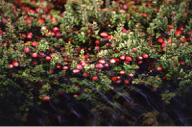
Vaccinium macrocarpon
Cranberry plant
www.VBMA.org




